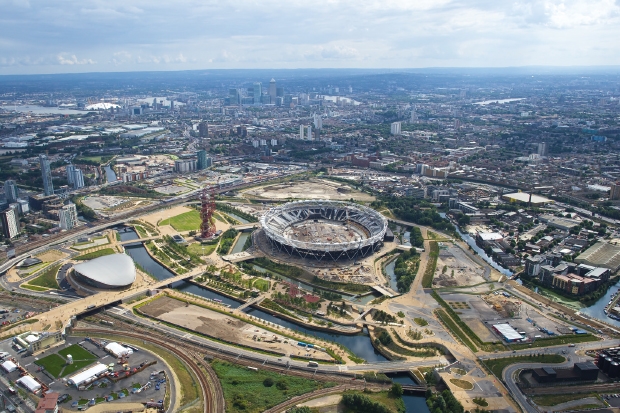Overseeing Boris Johnson’s futuristic office, with its spectacular view of the increasingly culinary skyscape of the City of London with its Gherkins and Cheesegraters, is a bust of Pericles, distinctive in his helmet. It is no surprise that the Mayor should hold himself up to the gaze of the Athenian general and politician because he instituted the greatest programme of public works in the ancient world in Athens in the middle of the 5th century bc.
Since Boris was elected Mayor in 2008 there has been an enormous amount of development in London. The demand that fuels growth is ever present. The south bank of the Thames is bristling with cranes and after years of stalemate Battersea Power Station is in development. But Munira Mirza, deputy mayor for culture, points out the limited powers of the mayor, constrained by local councils and often limited to restrictions on planning. Critics have a tendency to lump Boris with the developments they do not like and to minimise his role in those that they do. But that is to grant too much power to the mayor — who is generally a cheerleader, a mediator and a fundraiser with limited planning powers and funding, trying to generate the development that London needs while embedding (Mirza’s word) culture.
There is, however, one development where Boris is at his most Periclean and where his ability to lead the development is bolstered by public funding. That is the development of the Olympic Park in Stratford, a transport hub which will be increasingly central as London lumbers east. The park and the facilities left in the wake of the Games are open and enjoyed by many including, after 2016, West Ham fans as the Olympic Stadium becomes their home. Boris strongly urges the bicycle ride from Islington, where he lives, along the canal to Stratford. There is significant private residential development including affordable housing.
But Boris’s particular inspiration is in the creation of a nexus of cultural and educational institutions in emulation of Prince Albert and the mighty legacy of the Great Exhibition of 1851 from Imperial College to the V&A. ‘Congruent with breakthroughs in digital technology to form a place of stimulation,’ he says. In that respect it is particularly significant that the V&A will open a major space in Stratford where it can display parts of its collection currently unseen as well as reach out to new audiences. Other institutions to be persuaded to join the move east include Sadler’s Wells, the University of the Arts and a major UCL campus.
Somewhat surprisingly, joining these will be the venerable Washington DC museum, the Smithsonian. The Smithsonian has a presence in New York but hitherto not outside the US. The choice of the Smithsonian could be criticised as obscure. To Boris it is a space to promote the distinctive American vision of the world through the excellence of its vast collections and a concrete demonstration of the Atlantic alliance. There will be further announcements to come, I am told — although it is unlikely that Stratford will be the location of Sir Simon Rattle’s new concert hall.
There is no blueprint for who should come. ‘We asked the Tate but Nick Serota’s hands were full with his new extension,’ an extension the mayor put money into. The plan seems to have been to attract institutions with authority from a mix of disciplines. The hope is that this will prove a fertile mix and from that cultural broth great ideas will come. It is a little like an Oxbridge College writ large, with better dancing and clothes, where different disciplines jostle. Create the cultural context and vision, design and economics will follow, seems to be the idea.
It is an extremely attractive vision, seductive even. And an articulation of what his admirers love about him and his detractors hate. Boris waxes lyrical for a minute on the hairstyles of young east Londoners who will fuel his institutions. ‘Tremendous Victorian whiskers… and ginger beards as though Londoners have instinctual understanding of the pogonological.’
Without the enthusiasm and charm of this mayor, to say nothing — one of his oldest associates reminds me — of his dogged energy in pursuit of the institutions and donors who make it possible, what a different prosaic vision we would be presented with. But can the greatest development of cultural institutions since South Kensington really be so whimsical?
The apt symbol seems to be the new Routemaster designed by Thomas Heatherwick, who has as good a claim as any to being Pheidias to Boris’ Pericles. Traditional in its colour and shape, it fizzes with eccentricity. It wants to fight the nanny state but how often can you use its hop-on hop-off facility? And what about the cost? Then again, it is clean; advertisers and passengers love it. And it adds a touch of magic to a great city.






Comments